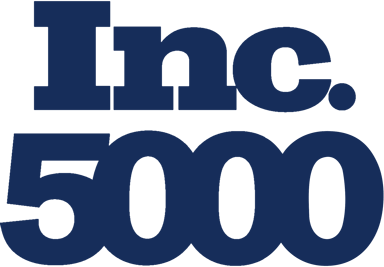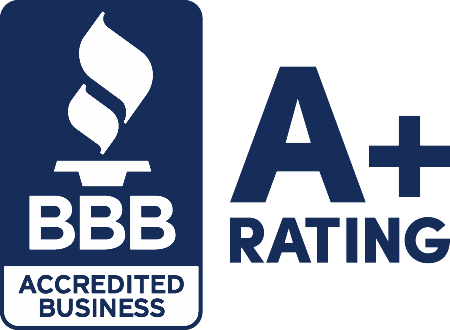What is the Small Business Administration (SBA)?
The Small Business Administration (SBA) helps Americans start, grow, and build resilient businesses. The agency offers a range of resources for small business owners, including entrepreneurial training, business grants, contract services, local assistance, and more. SBA was created in 1953 as an independent agency of the federal government. The organization was established by the Small Business Act, signed by President Dwight Eisenhower.
The SBA’s organizational structure is led by an administrator and a deputy administrator, both of whom are confirmed by the Senate. Key officials within the organization include the chief counsel for advocacy and the inspector general, who provide leadership, oversight, and ensure accountability. The SBA operates through various offices, such as the Office of the Small Business Advocate and the Office of Size Standards, to support small businesses nationwide.
One of the agency’s most significant resources is the SBA loan program. Under the program, small business owners work with the SBA’s approved lending partners. SBA-approved lenders are one of three types of financial institutions: commercial banks, credit unions, or alternative financing facilitators, such as United Capital Source.
The SBA has at least one office in every state and territory, dedicated to assisting entrepreneurs by providing expertise, professional counsel, and resources tailored to their needs. The SBA does not service the loans or provide funding, but it does set limits on what lenders can charge and partially guarantees the loan amounts. With government backing, lenders can offer higher borrowing amounts at lower interest rates and longer repayment terms than traditional business loans.
However, to take advantage of any SBA service, including getting SBA loans, your business must meet the agency’s size standards to qualify as a small business.
What are the Size Standards to be a small business?
A size standard represents the largest size that a business can be and remain classified as a small business by the SBA. The Small Business Administration sets specific size standards under the authority of the Small Business Act and relevant legislation. The SBA’s regulations define the criteria for classifying a business as small, and these regulations are periodically updated to reflect changes in the market and policy. For detailed reports and analysis on the SBA’s size standards and recent legislative changes, the Congressional Research Service provides authoritative resources. Government agencies define small businesses in different ways.
IRS Small Business Definition
The Internal Revenue Service defines a small business as any enterprise that earns less than $10 million in annual revenue. However, different small business tax benefits might have additional qualifications.
SBA’s Small Business Definition
The SBA’s definition of a small business varies by industry. The following industries often have subsectors that might change the number of employees or the maximum average annual receipts cutoff for small businesses. In a later section, we will cover how to find your exact subsector using NAICS codes.
Average annual receipts refer to total revenue plus the cost of goods sold. The standards are as follows:
Agriculture: You cannot exceed $750,000 in average annual receipts for most agricultural businesses. However, some subsectors in fishing and gaming can go as high as $27.5 million (Postharvest crop activities).
Oil & Gas Extraction: 1,250 employees or 750 employees if natural gas liquid extraction.
Mining & Mining Support: Between 250 and 1,500, depending on the subsector. Some subsectors use annual receipts instead, and the limits range between $18 million and $45.5 million.
Utilities: Depending on the sector, no more than 250 to 1,500 employees. Three utility subsectors use annual receipts, ranging between $26.5 million to $36 million.
Construction: There are many construction subsectors. On the low end, construction businesses cannot exceed $16.5 million, and the high-end limit is $39.5 million.
Manufacturing: Depending on the subsector, the number of employees cannot exceed 500 to 1,500.
Wholesale Trade: Between 100 and 250 employees, depending on the subsector.
Retail Trade: Most sectors use average annual receipts, with the cutoff for small businesses running between $8 million and $41.5 million. A few retail subsectors employ between 100 and 200 employees.
Transportation and warehousing: Employee limits range from 500 to 1,500. Some sectors use receipts ranging from $8 million to $41.5 million.
Information: Employee limits range from 250 to 1,500 employees; annual receipts range from $9.5 million to $41.5 million.
Finance and Insurance: Some sectors limit employees to 1,500, and others limit annual receipts between $13 million and $41.5 million. The small business cutoff for some financial companies is based on total assets, not exceeding $750 million.
Real estate, rental, and leasing: Average annual receipt limits range from $8 million to $41.5 million.
Professional, scientific, and technical services: annual receipt limits range from $8 million to $41.5 million. For other subsectors, employee limits range between 150 and 1,500 employees.
Management of companies and enterprises: Offices of bank holding companies are limited to an average annual receipt of $34 million. Offices of other holding companies are limited to earning no more than $40 million.
Administrative and support, waste management, and remediation services: Depending on your subsector, no more than $7.5 million to $41.5 million in average annual receipts.
Educational services: Depending on the subsector, the average annual receipts cannot exceed $8 million to $41.5 million.
Healthcare and social assistance: Cannot exceed $7.5 million to $38.5 million in average annual receipts, depending on the subsector.
Arts, entertainment, and recreation: Depending on the subsector, the average annual receipts can range from $8 million $41.5 million.
Accommodation and food services: Cannot exceed between $8 million and $41.5 million in average annual receipts, depending on the subsector.
Other services: Depending on your subsector, no more than $7 million to $41.5 million in average annual receipts.
What are the advantages of being a Small Business?
Small businesses represent more than 99% of all U.S. enterprises. The SBA protects the interests of small business owners and helps them expand their businesses through access to resources, guidance, and support.
Since so much of the economy depends on the success of small businesses, several programs and incentives exist to assist qualifying companies. SBA programs help small businesses access money for growth, including through debt financing and by easing collateral requirements for underserved groups.
The SBA also facilitates contracting and government contracting opportunities for small businesses, which can help increase sales and support business expansion. Additionally, the SBA offers specialized programs and resources for diverse groups, including Native Americans and women entrepreneurs, to support their participation in contracting, marketing, and sales.
Tax Incentives
Many local and state governments provide lucrative tax incentives to attract small businesses. For example, the Small Business Health Insurance Tax credit allows some companies to save up to 50% on employee healthcare costs when they purchase insurance from the Small Business Health Options Program (SHOP). There are other incentives to help ease a company’s federal income taxes.
Government Loans
Small business owners can potentially qualify for SBA loans, which are considered the gold standard of small business financing. There are many loan packages available in the SBA loan program. You should be able to find a loan to cover just about any business need.
The United States Department of Agriculture (USDA) administers the OneRD Guaranteed Loan Initiative to promote investment in rural economies. There are several loan options available.
Government Grants and Contracts
There are many grants available to certain small businesses. Federal, state, and local government agencies provide grant programs to help stimulate business and economic growth.
Being a small business can also help secure certain government contracts. The U.S. federal government is the largest customer in the world. The SBA collaborates with over 23 federal agencies to assist small business owners in securing government contracts. For example, the Historically Underutilized Business Zones (HUBZone) program makes more contracts available for qualifying small businesses.
How can I tell if my business qualifies?
The SBA provides methods to check your business’s size status. Follow these steps:
-
Find your NAICS code on the SBA size standards table.
-
Calculate your three-year average for employees or annual receipts, depending on which criteria are used for your NAICS code in the table.
-
Go to the SBA Size Standard Tool.
-
Input your 6-digit NAICS code.
-
The tool will prompt you to enter your average number of employees or annual receipts, depending on which metric is used for your code.
-
The tool will return results, indicating whether your enterprise qualifies as a small business.
Frequently Asked Questions
Here are the most common questions about SBA small business size standards.
What loan options are available for Small Businesses?
As previously discussed, qualifying as a small business is the first step in obtaining an SBA loan. The loan program consists of the following:
-
SBA Export Express Loans
-
SBA 504 Loans (aka SBA CDC/504 Loans)
-
SBA Disaster Relief Loans
-
SBA Export Loans
There are other qualification requirements you must meet. Important qualification factors are whether your business operates primarily in the U.S. and is based in the U.S.
Additionally, each SBA-approved lender sets minimum requirements for personal credit score, time in business, and annual revenue.
SBA loans are the most advantageous small business loans available, but they are not without downsides. Here is a quick summary of the benefits and drawbacks of SBA loans.
SBA Loan Pros & Cons
Pros:
-
High borrowing amounts
-
Low interest rates and long repayment terms
-
You can use the funds for various business purposes
Cons:
-
Lengthy application and approval process
-
Large amounts of paperwork
-
It might require collateral
-
It almost always requires a personal guarantee & down payment
Other Small Business Loan Options
SBA loans are far from the only loan options for small businesses. Many of these loans have lower qualification requirements and much faster funding times.
You may be interested in any of the following:
Does the SBA’s definition of a small business ever change?
Small business size standards are periodically updated. The government understands that generating $15 million in revenue twenty years ago is different from generating $15 million in revenue today. As such, NAICS code limits are updated to reflect changes and economic growth.
NAICS codes were last updated in 2022. The SBA also updated its size definitions in July 2022. The Small Business Jobs Act of 2010 mandates a review of small business size standards every five years.
What’s the difference between a small and a micro business?
A micro business is a much smaller enterprise than a small business. Many companies launch as micro businesses before growing or scaling up to small business status. The SBA defines a micro business as an enterprise with fewer than 10 employees.
What is SBA Disaster Relief and Recovery for Small Businesses?
Natural disasters and unexpected emergencies can have a devastating impact on small businesses, threatening jobs, livelihoods, and local economies. Recognizing these challenges, the Small Business Administration (SBA) plays a critical role in helping small business owners recover and rebuild through a specialized disaster relief program. When the federal government declares a disaster, the SBA activates its disaster relief loans to provide vital financial assistance to affected small businesses, private non-profit organizations, and even homeowners and renters. These SBA disaster relief loans are designed to help cover the costs of repairing or replacing damaged real estate, equipment, inventory, and other business assets. Unlike traditional SBA loans, disaster loans are available directly from the SBA, not through other lenders or financial institutions.
There are several types of disaster relief loans available through the SBA, including:
-
Business Physical Disaster Loans: Help small businesses repair or replace property, machinery, and inventory damaged by declared disasters.
-
Economic Injury Disaster Loans (EIDL): Provide working capital to help small business concerns meet financial obligations and operating expenses that could have been met had the disaster not occurred.
-
Military Reservist Economic Injury Disaster Loans: Assist businesses when an essential employee is called to active duty as a military reservist.
To qualify for these SBA programs, businesses must be located in a federally declared disaster area and meet the SBA’s size standards for small businesses. The application process is streamlined to provide quick access to funds, and SBA field offices and local partners offer counseling services and low-cost training to guide business owners through the recovery process. The SBA also collaborates closely with other federal departments and agencies to coordinate aid and ensure that small businesses receive the necessary support.
Disaster relief is a vital component of the SBA’s mission to protect and support businesses, preserve small business jobs, and foster economic development in communities nationwide. By providing access to capital and expert guidance during times of crisis, the SBA helps small businesses recover more quickly and emerge stronger, thereby safeguarding the backbone of the American economy.
SBA’s Small Business Definition – Final Thoughts
Small businesses create two-thirds of new jobs and contribute nearly half of the GDP. The significant contribution of small businesses motivates the government to provide support for small business owners.
Various grants, loans, contracts, and other programs are exclusively available to small businesses. However, you must meet government size standards to qualify for any small business programs available.
Using the tools above, you can determine where your enterprise falls in terms of size. Contact us if you have further questions or would like to apply for an SBA loan or other small business loan options.















